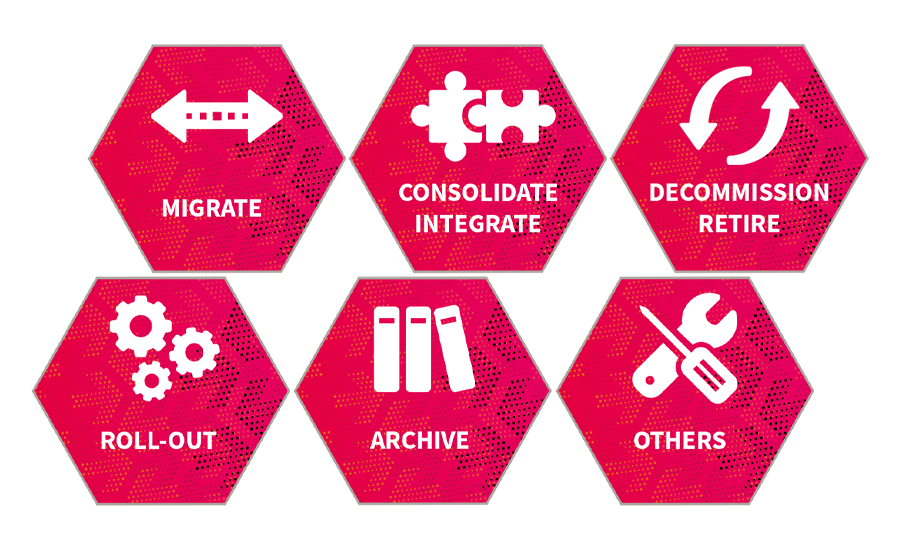Robust logging
MEDIA
HELP
Would you like to migrate to the cloud, consolidate your ECM landscape, or simply archive records to an enterprise archive? migration-center is a leading content migration software designed to accelerate the go-live of a variety of popular ECM applications.
As a 100 % out-of-the-box solution, migration-center is a fully documented, easy to deploy solution that does not require additional programming or scripting effort for migrating your content between the supported ECM platforms.

migration-center’s predefined migration approach
migration-center is based on best practice principles developed over thousands of migration projects. Compared to typical ETL tools that only consists of the three steps extract, transform, and load, migration-center goes a step beyond and allows the analyst to follow the same six migration phases in each project.
With its enormous set of out-of-the-box features, capabilities and migration paths, migration-center covers a wide range of migration scenarios. All these features can be easily combined through configuration to achieve any kind of migration objective. For this, all configurations and tasks monitoring can be done using the provided UI. Also, the configurations may be reused in other migration projects as well.

Overview of use cases covered by migration-center
This flexibility makes migration-center a real content migration platform for any kind of migration scenarios and helps customers to react easily on change requests during the project. In case migration-center is not able to handle migration requirements out-of-the-box, the API and framework make it possible to enhance capabilities (e.g. source or target system connectors) or modify the behavior of features (e.g. transformation rules) without touching the core elements of the product itself.
migration-center’s secret weapon is its ability to carry out successive delta migrations of your source systems. This permits migration activities in the initial project phase on live data without effecting your daily business operations. Users continue to work as usual on documents on their source systems, even while in the background migration activities are taking place.
During the first delta migration strategy phase migration-center will automatically pick up any changes to your source repositories and integrate them into the migration process. The second delta migration phase is in most projects planned for a weekend, so that the system downtime of only two days affects as little users as possible.
All components of migration-center are fully scalable within the IT infrastructure and allow a fast object load of mass volume. With this architectural concept, migration-center is able to leverage the maximum performance of any source (export) and target (import) system.
Especially in the context of big migration projects including repositories with 100+ millions of documents, migration-center’s flexible deployment model is a key success factor. It allows you to scale the performance over multiple physical or virtual machines on your network.
migration-center comes with a powerful transformation engine that allows object attributes (metadata) to be transformed by using a predefined but extendable set of functions. For extracting the values of an attribute that needs to be set in the target system, an unlimited number of functions can be combined to obtain the desired result.
The output of one can be used as the input to another, allowing highly complex transformation rules. Individual rules for every data set can thus be defined, specifying metadata extraction and transformation as required by the target system, the assignment of folder location, document links and access permissions, relations, and many more.
On the market since 2005, migration-center has been validated and approved by many companies in regulated environments like global pharmaceutical players. Our software has demonstrated the following quality features enabling more effective and efficient validation of migration project documentation:
For each individual set, migration-center allows the dynamic simulation and testing of all transformation rules before committing content to the repository import, including validation against the target model, automated or manual error handling, on-/offline simulation and rollback. Full logging and auditing capabilities are standard.
Compared to other migration tools on the market, it is not necessary to load millions of objects into the target ECM system to review the results of the transformation/migration process. Our approach helps customers to avoid wasting time by loading and rolling back millions of objects over and over again because of mistakes during the transformation phase.

 Introducing the CSV & Excel file scanner
Introducing the CSV & Excel file scanner